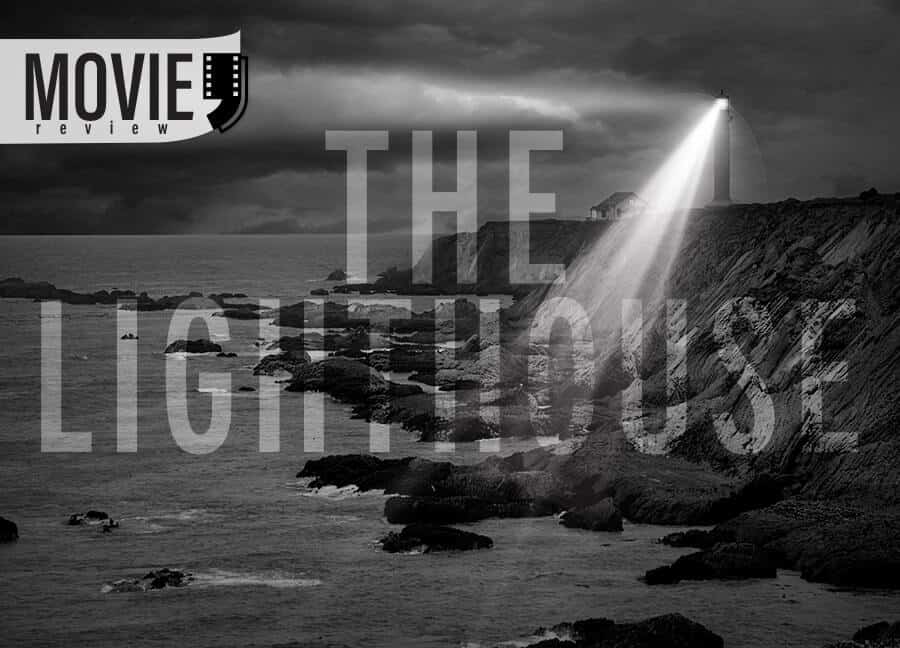I was considering making a block of film reviews, which would be exciting and experimental for me, sorting things out as well as experiencing pleasant emotions. I decided to choose a black-and-white film cycle and start with “The Lighthouse”, the festival thriller by Canadian director Robert Eggers. Even though my greatest love belongs to horrors and thrillers, “The Lighthouse” qualifies, yet doesn’t drive me to panic and sweaty palms, rather inspires deep thoughts and the desire to follow the line of myths and legends. Robert Pattinson with an older man, Willem Dafoe – the more aggressive one. The former will lose his mind and withstand the latter.
Before we get to the point, it’s worth looking at the technicians. We have known Robert Eggers from his earlier work “The Witch: a New-England Folktale”. It is one of his successful films, ranked at the top in world cinema. Together with his brother, Max Eggers, they have created a complete thriller in black-and-white, “The Lighthouse”. They have combined a bit of Alfred Hitchcock’s “The Birds” with Stanley Kubrick’s “The Shining”, but a significant part remains a constant love of fairies and legends. Originally shot with frames and lenses from the first part of the twentieth century, the technicalities create an enduring mystic ambience with noir colours on the screen.
How the stories of the ocean form the plot

The story takes place in the second half of the 19th century. Two guardians of an isolated island have come for a month, with different purposes. Ephraim Winslow\Thomas Howard (Robert Pattinson) – a young man who is escaping from himself, has come to earn more money. He has never imagined this kind of experience. Thomas Wake (Willem Dafoe), the absolute opposite of Winslow, an old sailor, pretends to be a sea dog, aggressive and brutal, with a dash of justice. From the first day, the job is divided unequally – while Ephraim takes care of all the darkness and dust, Thomas looks after the island’s sacral reality – the Lighthouse. At the same time, the plot reveals the legends and rituals which are convenient to all who dedicate themselves to the life of the sea. From the resident gulls to the mermaid made of wood that Ephraim finds in his bed, everything is soaked in mysterious beliefs.

Along the way, Thomas and Ephraim share a daily routine of dinners, quarrels, alcohol, and drunkenness. However, there is one thing the fellows can’t share – the night watch at the Lighthouse. Thomas forbids Ephraim from taking the role of guardian of the beacon, though it is the hardest job on the island. So, gradually, Ephraim’s desire to take the Lighthouse turns into an obsession, and every night Ephraim feels tempted to break the rule. In the background, the second storyline consists of dreams and visions with mermaids and octopuses. They get the strength to command along with Winslow’s awareness, which slightly washes the line between illusion and reality into a blur.
But the apparent storyline concerns the Prometheus myth. When the Greek titan, the son of titan and nymph, struggled with humans, he helped them to get better living conditions. He managed to outwit Zeus, and we know the myth about Titan, who was chained onto a mountain. Every day, an eagle pecked at his liver. That went on until Hercules saved Prometheus. So the director compares the heroes, compares Thomas to the God of All, and Ephraim to Prometheus, who fights not for the commonwealth, but over an obsession with light. Robert Eggers contrasts the personalities of the weak and subordinated Ephraim to the merciless and vile Thomas.
The Lighthouse as the final wish
If we take a look at why there is a clear connection between the Lighthouse and the aggressive behaviour of Ephraim towards Thomas, we can see that there is a strict reason why this happens. Unconsciously, Ephraim nurtures a hidden evil. Together with his previous boss, whom Thomas resembles and also reminds him of an old humiliation. The lighthouse is a symbol of the strongest desire. It combines two forces that fight inside the main character, as the shame and aggression he has experienced while working on the mainland catch up with him on the isolated island. Hallucinations, mermaids, octopuses, mixed with alcohol and intoxication, take possession of the hero’s mind. Which turns every night into torture, where the rumble of the lighthouse awakens a wild attraction, and the light beckons him to the top of a mystery. But Thomas, as a trigger-factor, does not allow him to realise his dreams and stands between him and the feeling of complete freedom. The fact of his pending departure saves him from extremes – he plans to be paid and sail away from the island, allowing the protagonist to play until the end. Ephraim lies about his past. He also hides the secret of his old boss’s death and his sincere wish for it.
The finale of the film reveals the true essence of the protagonist. The island itself turns out to be not a place where he ran away to hide the truth, but the site where he should have run to see that this truth is who he is. Even though there are two heroes in the plot, the branching out of events reveals how much the character of Robert Pattinson has revealed us. Defoe acts as a catalyst in this case. Each of his tricks provokes Ephraim, but by himself, he does not change what we couldn’t say about the first. So, the story of Prometheus suits the world-weary worker, who has tried to find a better place for himself. The only thing he has escaped – a society where everyone breaks their limits and personal predilections to be accepted. However, with the myths and legends, the director shows the problems of inequality, humiliation, the need to speak out about important things. Through the fairies, Mr. Eggers touches on the secret wishes that a most of us could not only make in reality but allow ourselves to dream. With the social background, it helps to compare the circumstances that happened last century to contemporary life. And realise that little has changed since then – everyone wants to be free.
Photos: Shutterstock / Photomontage: Martina Advaney
More reviews from the author:
Support us!
All your donations will be used to pay the magazine’s journalists and to support the ongoing costs of maintaining the site.
Share this post
Interested in co-operating with us?
We are open to co-operation from writers and businesses alike. You can reach us on our email at cooperations@youthtimemag.com/magazine@youthtimemag.com and we will get back to you as quick as we can.









